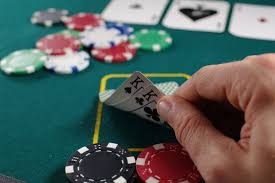Poker Hand Analysis: Mastering the Art of Strategic Play
Poker is a game that requires both skill and strategy, and analyzing your hands is essential for improving your play. Whether you’re just starting out or have years of experience, learning to evaluate your poker hands can help you spot errors, enhance your decision-making, and increase your chances of winning. This article will delve into techniques and strategies to help you analyze your poker hands like a professional, with links to more in-depth resources provided by swerte99.
Hand History Reviews
One of the most effective methods for analyzing your poker hands is conducting a hand history review. This process involves examining the hands you played during a specific session or tournament and scrutinizing the decisions you made at each stage. By doing this, you can pinpoint areas where mistakes were made, identify patterns in your play, and make necessary adjustments for future games.
Sample Hand History Analysis
For a practical example, we reviewed a hand where we were uncertain whether to bet on the turn and referred to our swerte99 table notes to determine if we made an error.
In this hand, we were playing ₱291.54/₱583.08 on the button. The villain in the LJ (lojack, three seats to the right of the button) opened for ₱2332.32, and we 3-bet to ₱6996.96. The LJ called. The pot is now ₱13993.92, and the effective stacks are ₱49561.80.
Before committing any chips, we should have considered the likely SPR (stack-to-pot ratio) and our range for making a 3-bet from the button. With our actual hand of AsQd, we have the type of hand that we frequently play this way.
Our range mainly consists of premium hands, but we also include some suited wheel aces and hands like AKo, AQo, and KQo.
Evaluating Flop Decisions
When the flop comes down Ac9s5h with our hand of AsQd, we evaluate options for big, medium, and small bets. We decide on a smaller bet of ₱4081.56 into the ₱13993.92 pot. This is a continuation bet after our 3-bet, and the board is high and dry. Our range strongly suggests “we have an ace,” while the opponent’s range is more likely to include dominated aces and set-mining hands.
We plan to continuation bet about ⅔ of our range. We start with the nuts and work our way down. We check back about half the time with top set, as our range is strong. Middle set is the most profitable, and we aim to bet and potentially stack someone with top pair. Two pair and top pair with top kicker (TPTK) are good for extracting value, while top pair with second kicker (TPSK) is where we tend to slow down. Pocket pairs lower than an ace are often used for “protection bets” or bluffs.

Turn Strategy and Analysis
When the turn brings the 6h, making the board Ac9s5h-6h, we opt for a 60% pot bet of ₱13702.38. Based on the action so far, we expect the opponent to either have top pair or an unimproved pocket pair.
Sets, two pair, and TPTK are solid hands for betting on the turn, as they likely represent the best hand. The real issue arises with the marginal kicker of AQ. According to GTO, we should not continue with weaker kickers when we’ve already shown strength with an Ace.
This is whyswerte99 emphasizes the importance of checking back with AQo in this situation. The “nothing or the nuts on the river” strategy for bluffs with backdoor flush and straight draws when semi-bluffing the turn suggests that, with near-100% frequency, checking back with AQo (top pair, second kicker) would have been the correct play.
Understanding Opponent Tendencies
Understanding your opponent’s tendencies is crucial for analyzing your poker hands. By observing how your opponents play, you can spot patterns in their behavior and adapt your strategy to exploit them. For instance, if you notice that a specific opponent bluffs frequently, you can use this insight to your advantage by calling their bluffs more often.
Study Hand Ranges with swerte99
Hand ranges represent the spectrum of hands that your opponents might have based on their position and prior actions. By analyzing these ranges, you can make more informed decisions about how to play your own hand. For example, if an opponent raises preflop from an early position, their hand range is likely stronger compared to if they had raised from a late position.
Integrating resources like the swerte99 Ranges App into your strategy can provide valuable insights into your opponents’ tendencies and enhance your decision-making at the table.
Use Tracking Software
Tracking software like PokerTracker or Holdem Manager is a valuable asset for analyzing your poker hands. These programs record your hand history and offer detailed statistics on your play, helping you identify patterns and make necessary adjustments. Many tracking tools also provide real-time data on your opponents’ tendencies, which can significantly enhance your decision-making at the table.
Take Notes
Taking notes on your opponents’ tendencies and behavior is a useful method for analyzing your poker hands. By documenting your observations, you can detect patterns in their play and adjust your strategy accordingly. For example, if you notice that a specific opponent consistently raises with strong hands, you can modify your approach to avoid getting trapped.
Consider Your Position
Position is a crucial factor in poker, and evaluating your position in each hand is key to making informed decisions. By considering your position relative to your opponents, you can enhance your decision-making process. For instance, being in a late position provides you with more information about your opponents’ actions, allowing you to make more strategic choices based on their moves.
Review Your Bet Sizing
Bet sizing is another vital element in analyzing your poker hands. By reviewing your own bet sizing in each hand, you can pinpoint where you might have overbet or underbet and make the necessary adjustments. Furthermore, analyzing your opponents’ bet sizing can offer valuable insights into the strength of their hands, helping you make more informed decisions.
Pay Attention to Board Texture
Board texture refers to the arrangement of community cards on the table. By analyzing the board texture, you can make more informed decisions about how to play your hand. For instance, if the board texture is very wet (i.e., featuring many potential draws), you may need to be more cautious with your bets to avoid getting caught by strong draws.
Practice, Practice, Practice with swerte99
Like any skill, mastering the art of analyzing poker hands requires practice. The more you play, the more hands you’ll encounter, and the more opportunities you’ll have to review and improve your play. Practicing with friends or in low-stakes games can also help you refine your skills while minimizing financial risk.
Learn from the Pros swerte99
Finally, learning from the pros can be a great way to enhance your hand analysis skills. Many professional poker players provide courses, books, and videos focused on hand analysis and other aspects of the game. By studying their strategies and techniques, you can gain valuable insights and improve your own skills.swerte99

